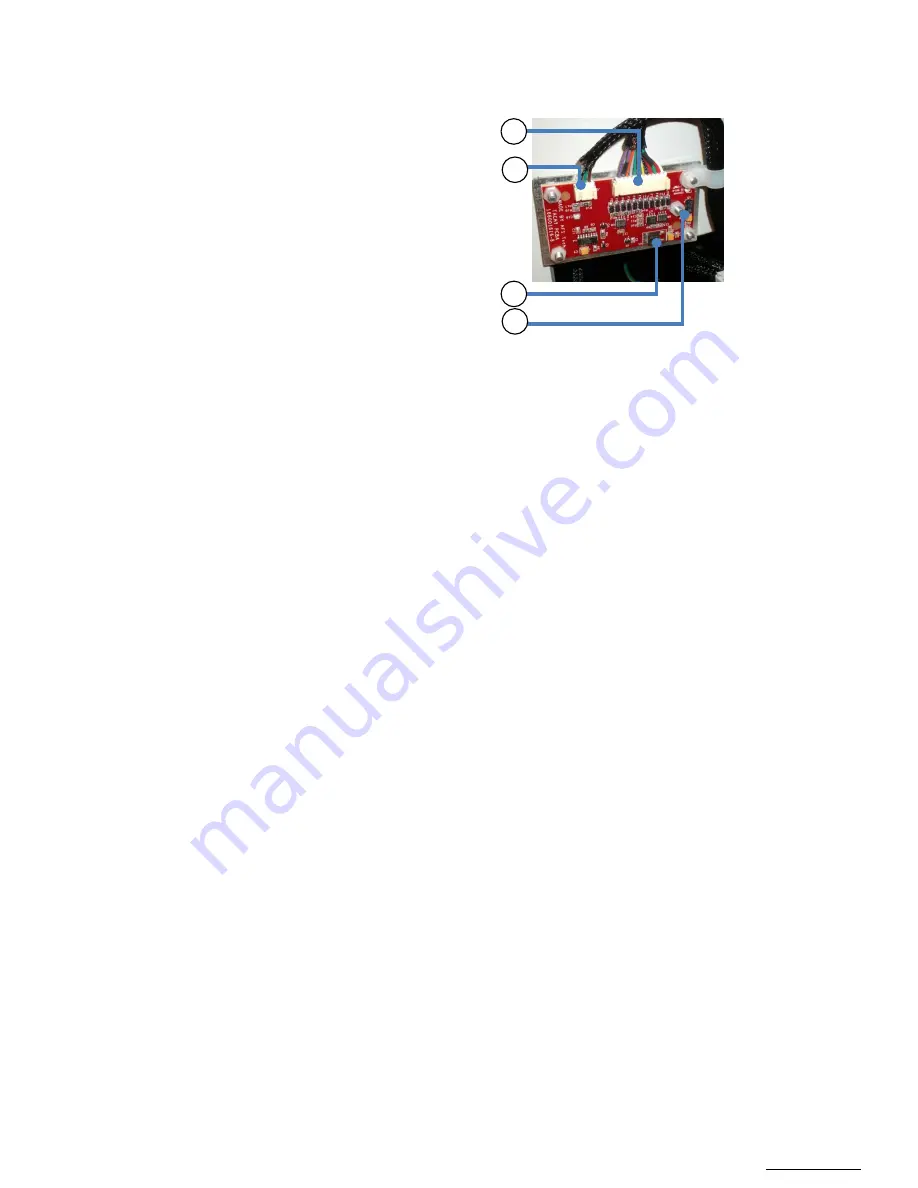
OM0240
|
Rev 6 December
/2019
Page 7 of 34
NuAire, Inc.
|
2100 Fernbrook Lane
|
Plymouth, MN 55447
|
U.S.A
|
ph: 763.553.1270
|
fx: 763.553.0459
|
tf: 800.328.3352
1.5 Tachometer Board
The tachometer board is composed of:
1)
The connection to the tachometer sensor
2)
The connection to the Control Center
3)
The accelerometer: It detects the vibrations emitted
by the centrifuge. The triggering threshold is set by
the menu for setting the sensitivity to the imbalance:
see §. 0
4)
The accelerometer is perfectly maintained by the 5
mounting points.
1.6 Temperature Probe
It is located under the lid, and therefore nearest to the samples when the lid is closed and the rotor is in rotation.
The measurements are only taken when the rotor is rotating.
It is a PT500 class A probe.
During a centrifugation cycle, the temperature displayed on screen is that of the sample.
Before being centrifuged, the sample must be brought to the program setpoint temperature.
Use either an oven, or a refrigerator to bring it to the desired temperature.
The centrifuge is designed to maintain the temperature during a rotation cycle.
1.7 Imbalance Sensor
In the case of a load presenting an imbalance, the oscillations caused will be higher than the centrifuge’s own vibration.
The vibration sensor then intervenes to detect the movements of the centrifuge. This sensor is an electronic accelerometer.
It is placed at the level of the tachometer board, located to the side of the shield, and sends the information to the
microcontroller board.
The systematic minimum threshold detection is: 25 gr. The detection results in an immediate shutdown of the power supply
to the motor, and a slowdown of the rotor free wheel.
This threshold is adjustable according to the media on which the centrifuge rests, in order for the imbalance sensor to
always be triggered with a minimum imbalance of 25 gr see Section 3.3 for the procedure to adjust the imbalance detection
threshold.
1.8 Gas Spring
A single cylinder allows the opening of the lid when it is released by the lock. It is a gas cylinder, fitted with a spring. This
spring allows a better relaxation at the opening start. The cylinder should open the lid without causing rebound of the latter
at the end of travel.
1.9 Absorption of Vibrations
Any system has its own resonance frequency, which will cause oscillations. The dissipative elements of these oscillations,
which translate into vibrations, are anti-vibration mounts, numbering 4, coupled by an absorbent foam. This set will allow
for absorbing parasitic movements whatever the rotor, its load, and its speed, providing that the load is balanced.
Three (3) of these mounts are placed vertically between the motor and the stabilizer bed.
The 4
th
mount acts horizontally. It is located under the machine frame.
1.10 Ventilation System: Ventilated Model
The ventilated model allows for heat exchange between the inside of the centrifugation bowl and the ambient air. The air
inlets are installed in the lower part of the lid. This ambient air is sucked in and enters the bowl by the central part of the
lid.
During rotation, the friction between the rotor and the air causes overheating. The hot air is expelled by the circular part
under the lid. A circuit allows this air to descend through the centrifuge body, by the duct located on the right, near the
hinge. A silencer allows you to evacuate the air from the rear, under the unit. The heat caused by motor rotation is also
evacuated by this conduit.
1
2
3
4








































